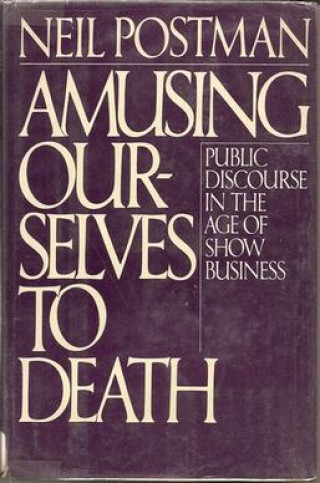The core of Postman’s argument is that every major new medium of communication transforms the culture using it, “by encouraging certain uses of the intellect, by favoring certain definitions of intelligence and wisdom, and by demanding a certain kind of content—in a phrase, by creating new forms of truth-telling.” To Postman in 1985, the culture was clearly shifting from being shaped by print communication to being shaped by television. As a result, the collective discourse went from being governed by a “coherent, orderly arrangement of facts and ideas” to being ruled by the imperatives of “show business.” Everything about TV was designed to be entertaining, and even when producers aimed to make programming that was “serious” or substantive, they inevitably ended up obeying those imperatives. Postman, a professor of education at New York University, took particular issue with Sesame Street, for example, because he felt that it taught children to think and learn using a format adapted from TV commercials.
A lot of Amusing Ourselves to Death concerns itself with dissecting the influence of TV commercials—which you likely see much fewer of than did the viewers of Postman’s day. Similarly, because the TV of 1985 was still primarily a network product, designed to abide by Federal Communications Commission restrictions and to appeal to the broadest possible audience, it tended to be bland, homogenous, and averse to controversy. TV, Postman argued, is “not congenial to messages of naked hate. For one thing, you never know who is watching, so it is best not to be wildly offensive.” But once the audience became fragmented into dozens of niche cable channels, all that changed, as stars of right-wing radio programs, like Morton Downey Jr., migrated to TV. Postman insisted that “haters with reddened faces and demonic gestures merely look foolish on television,” an observation that isn’t entirely wrong. It’s just that there turned out to be a decent-sized audience for that foolishness.
